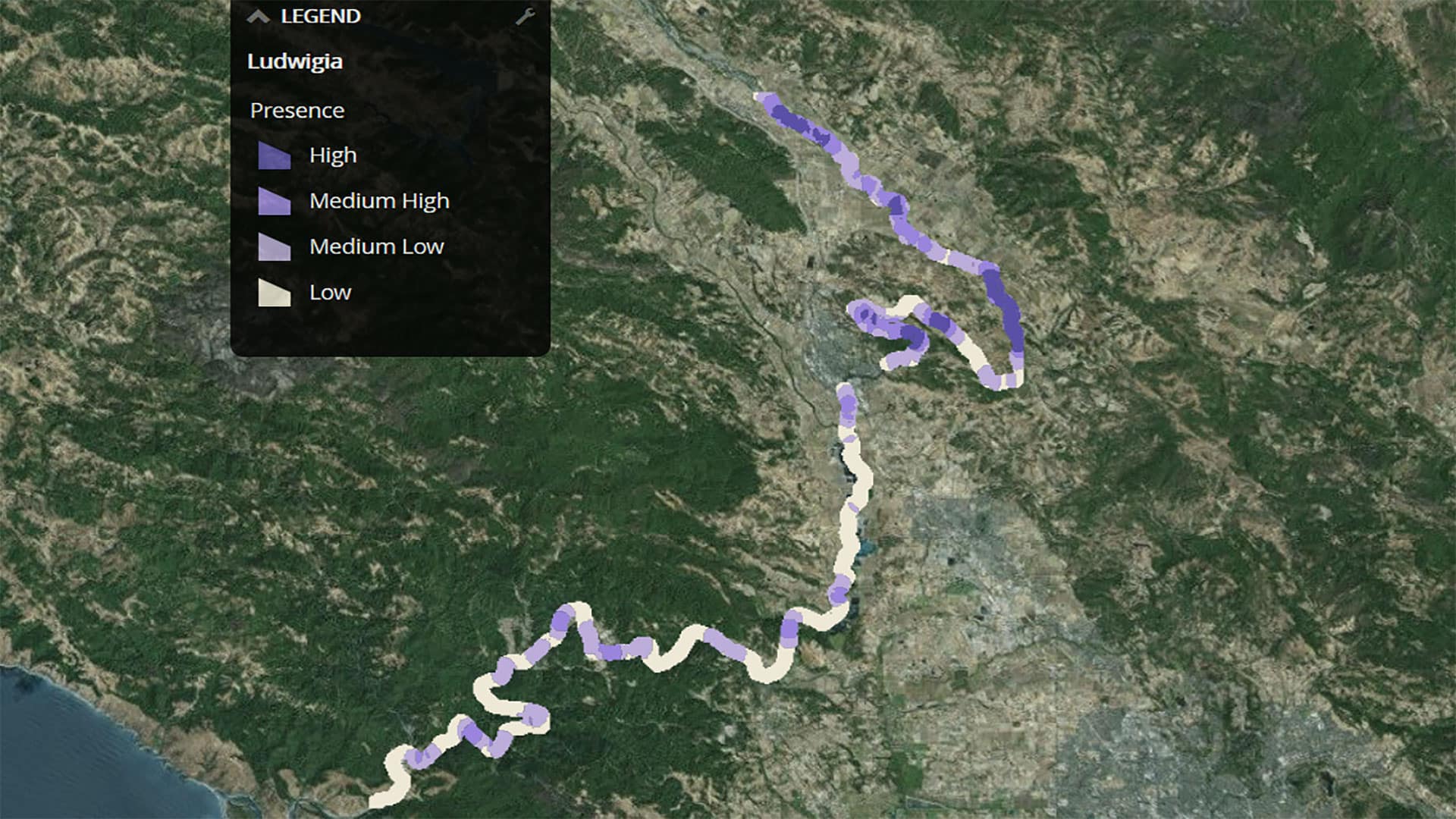Thousands of invasive species mapped with Google Street View imagery
March 30, 2016

The Freshwater Trust, a freshwater conservation nonprofit, has identified more than 6,500 potential occurrences of invasive plants along the banks of California’s Russian River.
Using imagery collected from a 67-mile float down the river with a Google Trekker, the nonprofit mapped 1,600 observations of species in the Arundo family and 5,000 observations of Ludwigia species. Common along rivers across the country, Arundo species are giant reeds native to southern Europe, northern Africa and eastern Asia. Some of these plants crowd out native plants and reduce wildlife habitat.
Ludwigia, or water primrose, is typically found in tropical areas and can clog waterways and dominate ecosystems. Plants of this species were present in more than 22 miles of the river.
Of four primary species of Ludwigia extant in the Russian River, two are considered native. The other two are highly invasive. While the Trekker imagery could not distinguish between species, it effectively characterizes where Ludwigia is present, and in what amount, allowing resource managers to make better decisions about its management.
“Invasive species are a big deal, and can have a profoundly negative impact on the health of any river,” said Michael Jolliffe, applied research scientist with The Freshwater Trust. “This analysis gave us a clear-eyed look into just how large a problem invasive species may be in the Russian.”
This past summer, The Freshwater Trust rented one of Google’s Trekkers, a 360-degree camera that snaps 15 photos every 2.5 seconds, attached it to a raft, and floated the length of the river. The images captured were then used to identify and prioritize restoration opportunities.
The organization has more than three decades of experience restoring rivers in the West from its offices in Oregon, Idaho and California.
“Street View allowed us to physically see the problem throughout the system,” said Jolliffe. “We now have a much better picture of the scale of the issue.”
While invasive plants have a dramatic impact on water quality and habitat function, they’re also often thirstier.
According to a California Invasive Plant Council study, Arundo uses 10 times more water than native vegetation.
The Russian River has already suffered from low flows in recent summers, impacting a vibrant recreation culture and endangered coho salmon and threatened Chinook salmon and steelhead populations.
“Considering the force of the drought in the West right now, our rivers cannot support exotic plants that consume more water and provide less habitat value, even aside from the other impacts” said Jolliffe.
Some have estimated that the West loses between 2 and 4.5 million acre-feet of water per year because of invasive tamarisk, a small tree from Asia. That’s nearly a trillion gallons of water.
The organization estimates that controlling the invasive weed problem in the Russian could cost upwards of $35 million.
“It’s helpful to consider landscape-scale analyses when quantifying the consequences of invasive species,” said Jolliffe. “These plants spread very quickly and can severely degrade the environment if left unchallenged, yet it is often difficult to piece together the extent of their impact when looking at individual swaths here and there. Getting the bigger picture of their prevalence will allow better characterization of their impact and trend over space and time.”
#California #drought #exotic plants #Google Trekker #invasive species #negative impact #observation #river health #Russian River #water consumption #weeds
